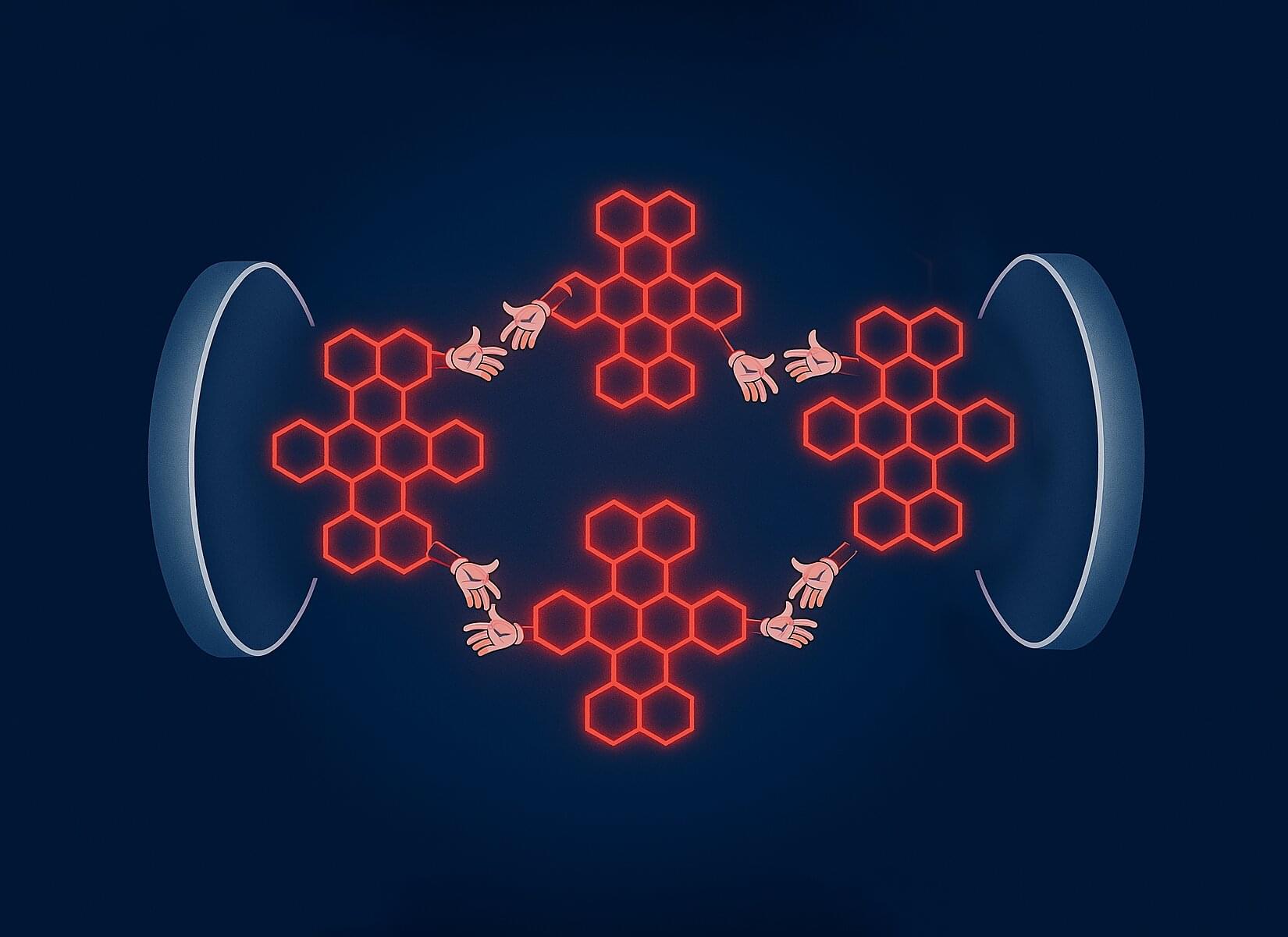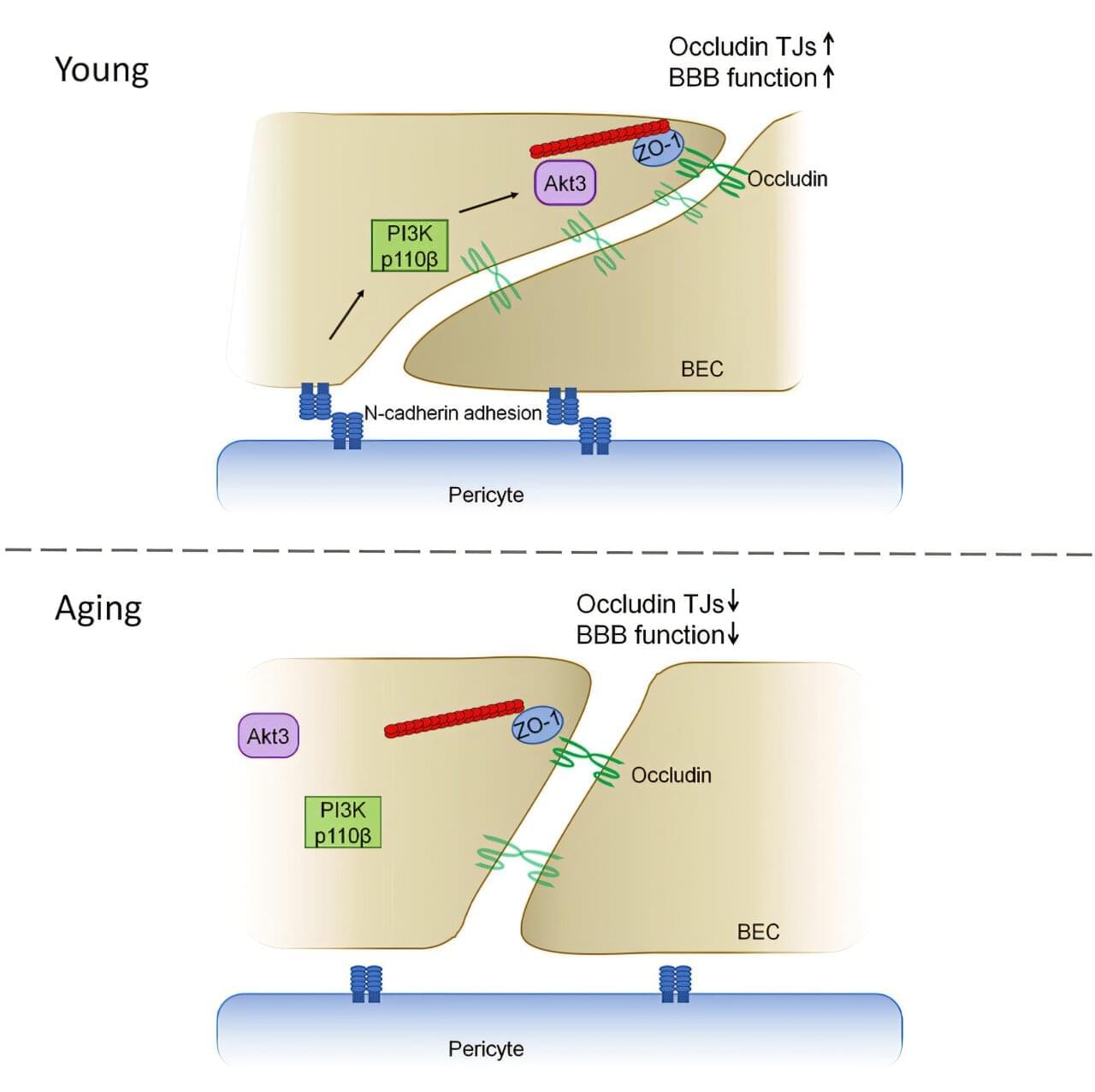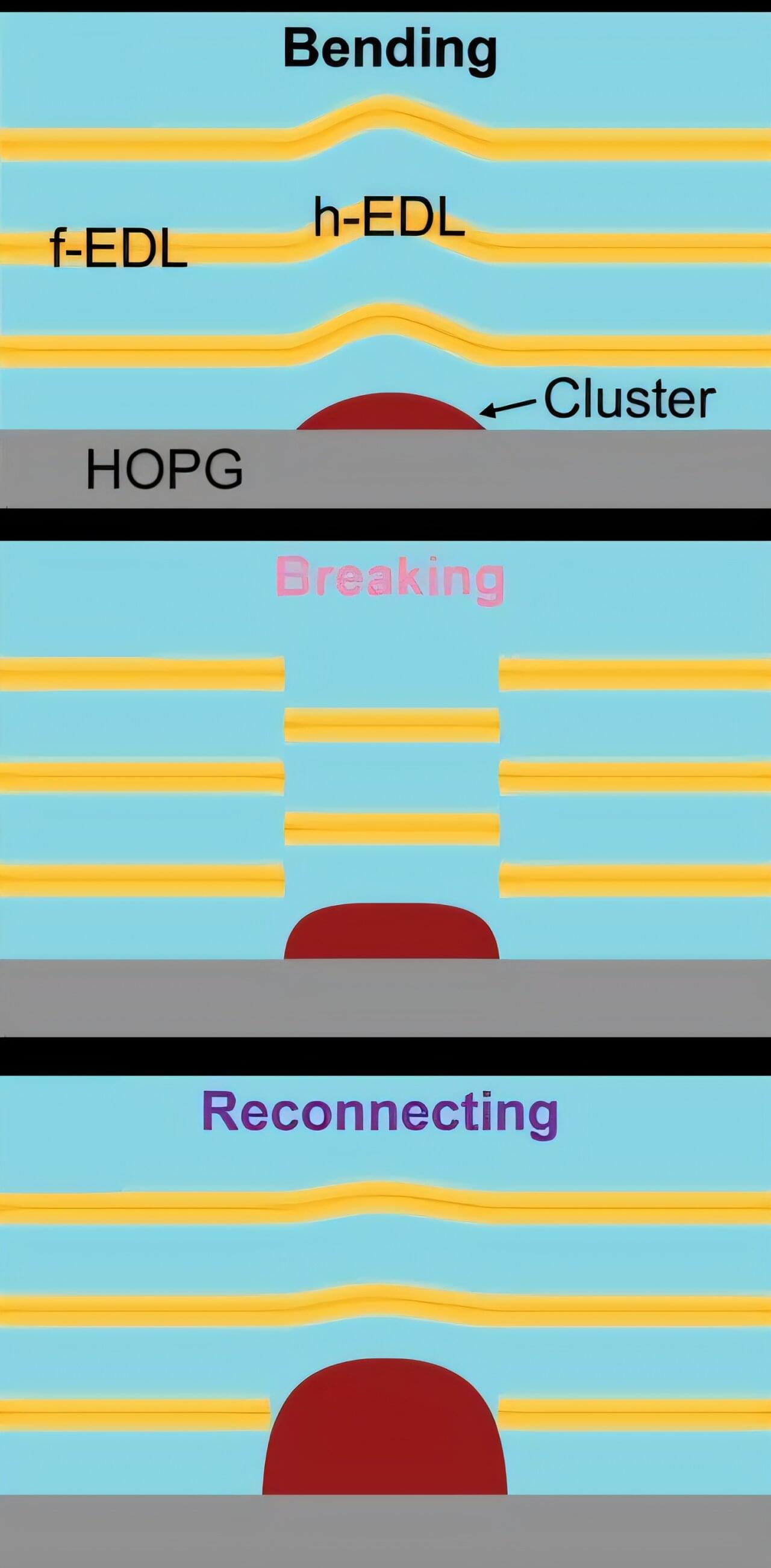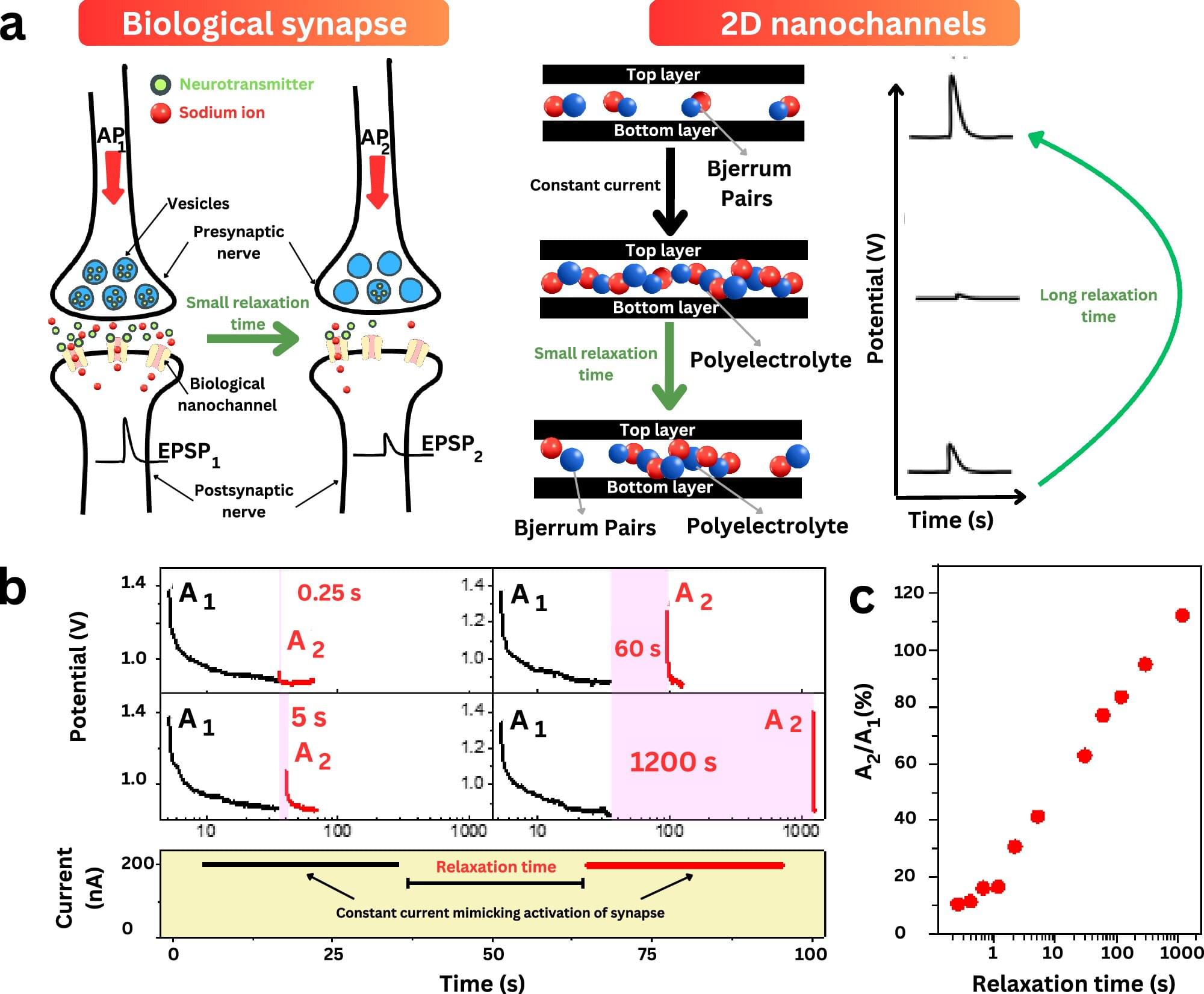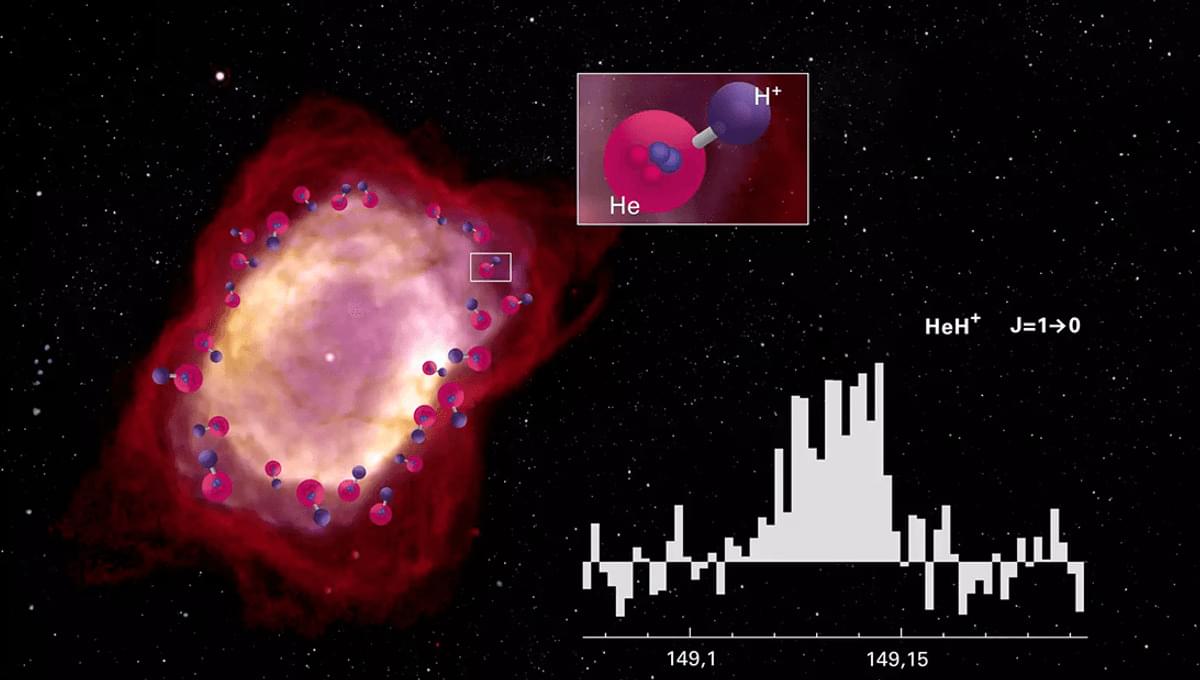Interactions between atoms and molecules are facilitated by electromagnetic fields. The bigger the distance between the partners involved, the weaker these mutual interactions are. In order for the particles to be able to form natural chemical bonds, the distance between them must usually be approximately equal to their diameter.
Using an optical resonator which strongly alters the quantum vacuum, scientists at the Max Planck Institute for the Science of Light (MPL) have succeeded for the first time in optically “bonding” several molecules at greater distances. The physicists are thus experimentally creating synthetic states of coupled molecules, thereby establishing the foundation for the development of new hybrid light-matter states. The study is published in the journal Proceedings of the National Academy of Sciences.
Atoms and molecules have clearly defined, discrete energy levels. When they are combined to form a new molecule, the energy states change. This process is referred to as molecular hybridization and is characterized by the overlap of electron orbitals, i.e., the areas where electrons typically reside. However, at a scale of a few nanometers, the interaction becomes so weak that molecules are no longer able to communicate with each other.
